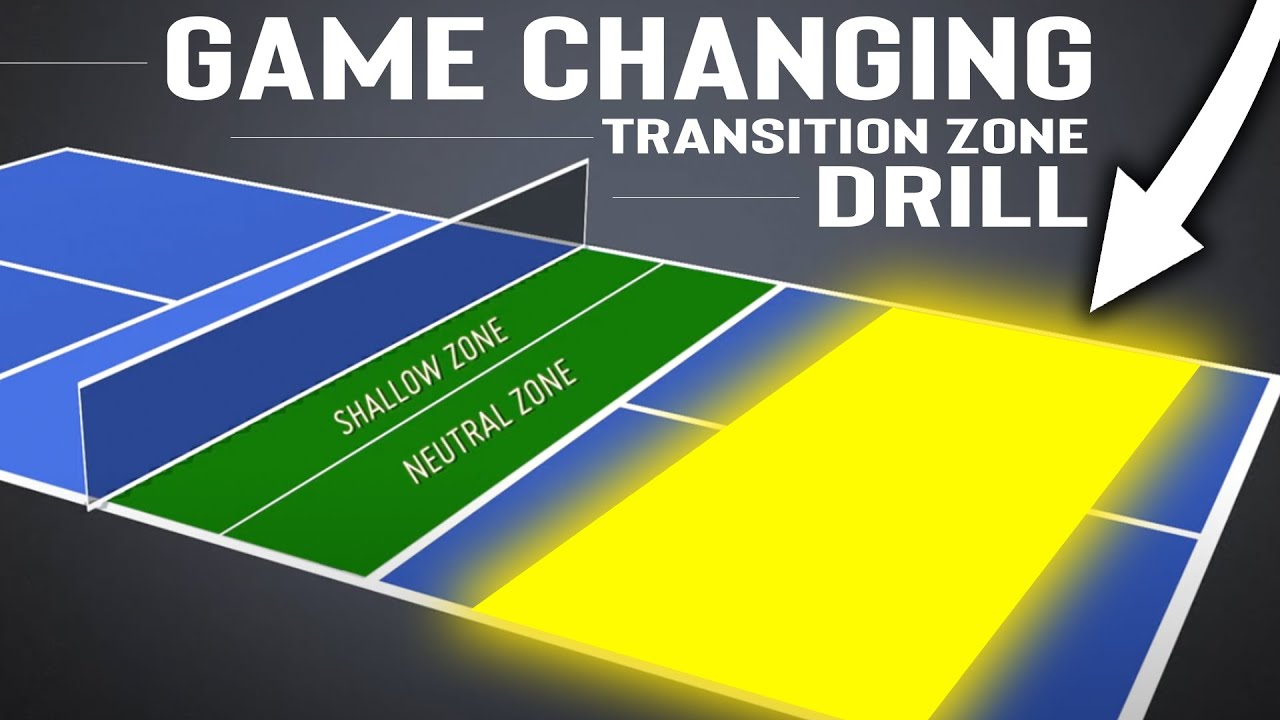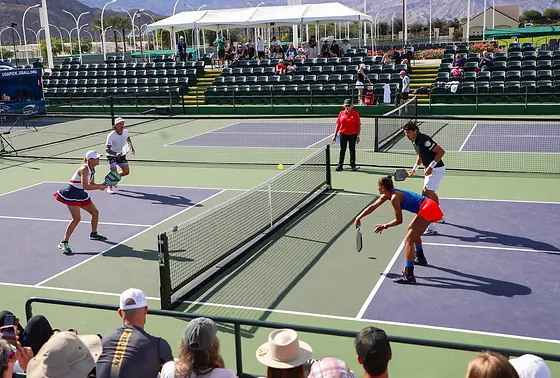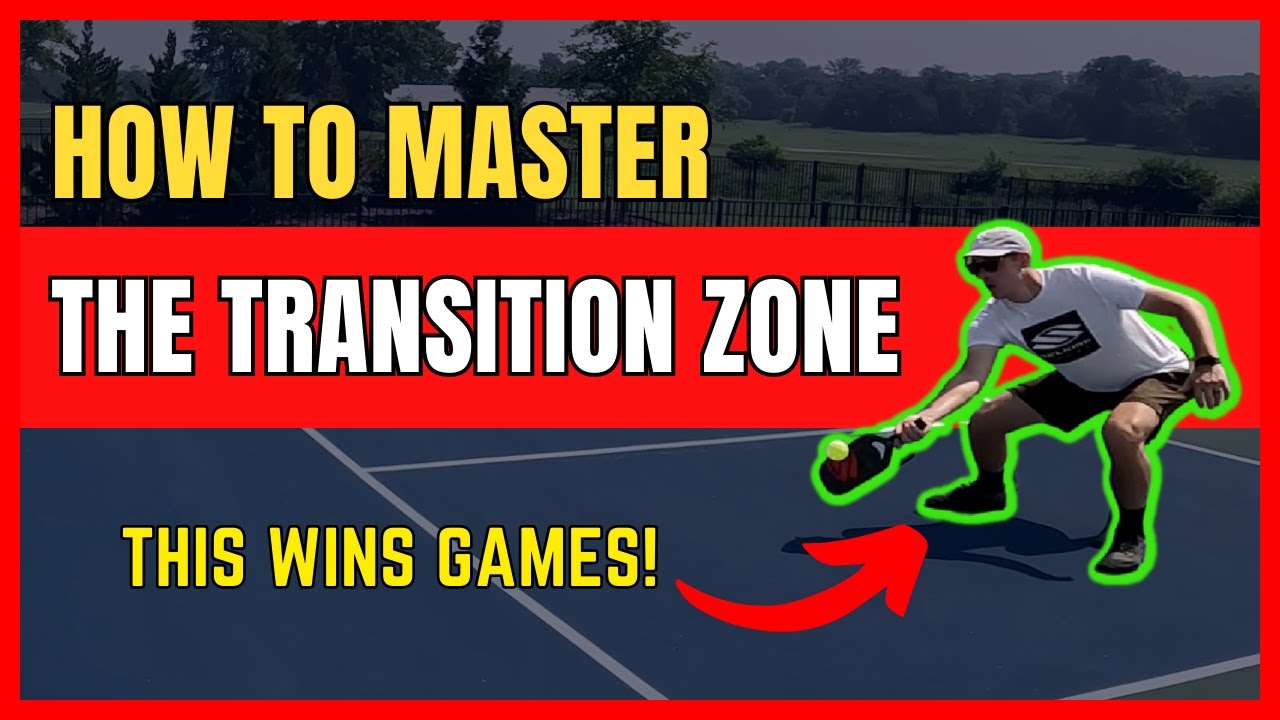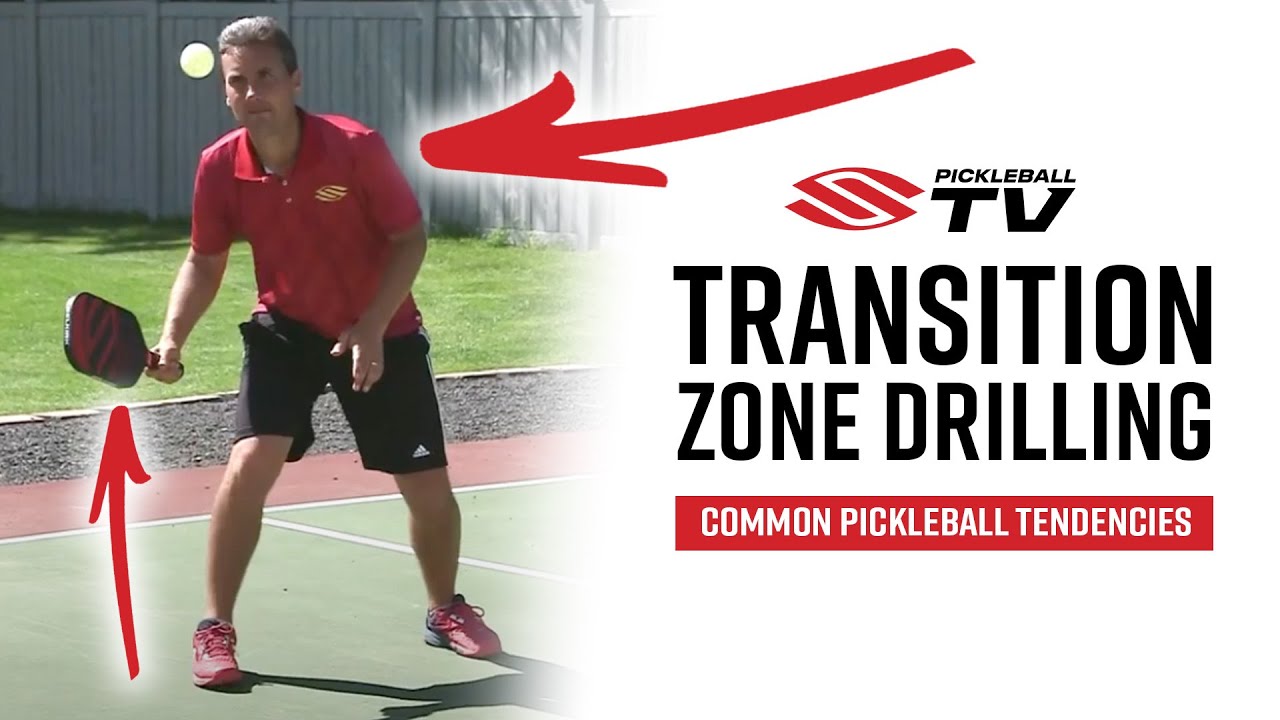Pickleball transition zone: mastering no man’s land
The pickleball transition zone, often referred to as “no man’s land,” is a game-changer on the court. Nestled strategically between the non-volley zone, or kitchen, and the backcourt, this area is paramount for players seeking to enhance their game. Yet, it remains one of the most misunderstood and often neglected zones in pickleball. Understanding how to navigate this 20-foot wide area not only opens up scoring opportunities but also creates a robust framework for transitioning effectively between defense and offense.
In this article, we will delve into the intricacies of the transition zone, exploring its rules, common pitfalls, and ultimate strategies for mastery. This knowledge will empower players of all levels to embrace the transition zone a space that, while it can feel intimidating, is laden with potential game-winning scenarios. Just as a painter finds beauty in the intricate blending of colors, players can find opportunity in this nuanced area of the court.
Understanding the Pickleball transition zone: defining its significance

The strategic crossroads: where offense and defense collide
The transition zone serves as a critical junction on the pickleball court where players must exercise both tactical acumen and physical finesse. This region’s significance lies in its ability to bridge the gap between the aggressive volleying tactics near the net and the defensive positioning further back. As players navigate this space, they face unique challenges that demand quick decision-making and awareness.
Much like a tightrope walker needs to maintain balance while traversing a narrow line, players must master the art of positioning as they move through the transition zone. It’s here that players can dictate the game’s flow, transforming defensive plays into offensive opportunities. Success in this area often hinges on player’s footwork, awareness, and the timing of their shots.
Controlling the pace: creating opportunities for scoring
The ability to effectively manage the pace of the game stems heavily from a player’s proficiency in the transition zone. Instead of merely reacting to an opponent’s shots, players can use this area to establish their rhythm. By strategically approaching the net from the transition zone, players set themselves up not just to return shots, but to dictate whether the next move is aggressive or defensive.
Consider the tactics of a seasoned chess player, who anticipates opponents’ moves to establish an advantageous setup. Similarly, players can leverage the transition zone to predict and respond to opponents’ plays, using techniques such as drop shots or strategic dinks to disarm their rivals. The transition zone, therefore, becomes an arena of psychological warfare, where control of tempo can lead to victory.
Common mistakes and misconceptions

No man’s land myth: dispel the misconception that the transition zone should be avoided
Though many players view the transition zone as an area to be avoided at all costs, believing it is a “dead zone,” this perception could not be further from the truth. The transition zone is filled with potential; it is the point where power meets precision. Instead of shying away, players should embrace this space, considering it an opportunity rather than an obstacle.
Players often employ the strategy of rushing to the kitchen line after a long rally. In doing so, they may find themselves in a precarious position, where they are not fully prepared for the next shot. It’s crucial to understand the nature of the transition zone; proper footwork and timing can allow players to harness its strategic potential.
Losing control of footwork: how rushing to the kitchen line can lead to poor footwork
One of the most common pitfalls associated with the transition zone is poor footwork often a result of players being overly eager to rush towards the net. This hurried movement can lead to missteps and poor shot execution. Picture a sprinter who takes their eyes off the finish line; their focus falters and they stumble just before crossing. Likewise, players must ground themselves in the transition zone before committing to an aggressive move.
Instead of bolting to the kitchen, players should adopt a more measured approach, using their footwork to maintain balance and ensure optimal positioning. This fluidity allows for the gradual execution of shots that are more likely to land in the desired target area.
Perfectionism: addressing the tendency to focus on perfect shots
Players often fall victim to the fallacy that they must execute perfect shots in every scenario, especially in the unforgiving transition zone. This pursuit of perfection can create unnecessary pressure, leading to missed opportunities. Instead of attempting to overhit the ball, players should focus on consistency and making smart shot selections that suit the given situation.
In embracing imperfection, players can learn to adapt their gameplay based on the dynamics of each match. Success is often found in consistency rather than in perfection. By recognizing this, players can focus their energy on making strategic plays that capitalize on their opponents’ weaknesses rather than aiming for unattainable perfection.
Strategies for mastering the transition zone

Positioning and movement: optimizing your court presence
Successfully navigating the transition zone largely depends on the player’s ability to position themselves effectively. Just as a skilled dancer utilizes space, balance, and movement to create art, pickleball players must master their movements within this crucial zone. Essential to effective positioning is the concept of the split step a slight jump or shift in weight that allows for quick transitions in movement.
Key Positioning Tips:
- Maintain a low center of gravity for better balance as you prepare to react.
- Keep your feet shoulder-width apart to ensure stability.
- Be ready to move in any direction by staying on the balls of your feet.
These tips enhance reaction time and allow players to capitalize on the many opportunities that arise in the transition zone.
Shot selection: choosing the right weapons for the situation
Understanding shot selection within the transition zone is integral to strategic gameplay. Players must know when to engage in volleying and when to use drop shots and dinks. By selecting the correct shot for every scenario, players can keep their opponents guessing while effectively managing the pace.
Consider the following shot options categorized by their optimal use case in the transition zone:
| Shot Type | Best Use Case |
|---|---|
| Drop Shot | When opponents are positioned deep in the court |
| Dink | To force opponents to move forward and set up for a volley |
| Lob | When your opponent is crowding the net |
| Volley | When you are close to the kitchen line and looking for a quick point |
By integrating varied shot options, players can keep their rivals on their toes, regularly shifting the narrative of the game in their favor.
Transition zone tactics: advanced strategies for experienced players

The volley-to-dink transition: mastering the art of deception
Once players have a firm grasp of the basics, they can begin to explore advanced tactics. One of the most effective strategies in the transition zone is the volley-to-dink transition. This involves faking a volley movement and instead executing a gentle dink shot that catches opponents off guard. This approach creates significant confusion and forces the opposing player to overcommit.
The effectiveness of this tactic hinges on the element of surprise. Just as a magician uses sleight of hand to divert attention, skilled players can dictate the flow of the game through deceptive movements. The more adept the player is at reading their opponent’s paddle position and stance, the more successful they will be with this technique.
The lob and drop shot: strategic use of the vertical dimension
In the transition zone, utilizing vertical tactics can be a game-changer approaches such as lobs and drop shots can effectively exploit opponents’ positioning. A well-timed lob can force an opponent to retreat, disrupting their rhythm and ultimately creating an opening for scoring.
Here’s how these advanced techniques can be applied:
- Lob: When your opponent is crowding the net, this high shot can reset the point and give you time to reposition.
- Drop Shot: Target your rivals who are positioned at the back of the court, enticing them to engage in deeper play, leaving openings for quick points as they scramble to the front.
Both shots demand precision and timing but can effectively shift the momentum of the game.
Practice drills

Work-up drill: practicing transition zone movement and reading your opponent’s paddle position
A structured practice routine is vital for mastering the transition zone. One effective drill is the work-up drill, wherein players alternate positions from the baseline to the transition zone and then back again. This drill focuses on footwork and quick reactions, facilitating real-game scenarios.
Work-up drill guidelines:
- Start at the backcourt and take turns moving toward the kitchen line.
- Practice maintaining balance and control while responding to various shots.
- Emphasize the importance of reading the opponent’s paddle position as you approach the transition zone.
Reset drill: practicing mid-court resets and responding to various shot types
Another useful drill is the reset drill, which emphasizes gaining control during frenetic points that occur in the transition zone. This drill is designed to allow players to practice neutralizing shots by resetting their positions and shots effectively.
Reset drill steps:
- Assign a partner to send various shot types into the transition zone.
- Work on resetting from dinks to volleys, maintaining a strong foot posture and balance.
- Focus on controlling the pace and timing of your shots based on your partner’s delivery.
Through consistent drills, players can solidify their command of the transition zone, honing skills that translate directly to match play.
Conclusion
Mastering the transition zone is not just a technical skill it’s a fundamental aspect of strategic gameplay that can dictate the outcome of matches. By understanding its significance, optimizing positioning and movement, and employing effective shot selection, players can seize control of the game’s tempo, creating numerous scoring opportunities.
Embrace the transition zone with confidence and commit to rehearsing the outlined strategies and drills consistently. Over time, you will uncover the transformative power this area holds, leading to an empowered sense of command over your matches. Remember, the art of pickleball mastery lies in your ability to navigate the ebb and flow of the court, and the transition zone is the vessel that can lead you there.
I invite all players to share your experiences or questions about the transition zone in the comments section below. Let’s create a vibrant community where we can learn from one another and elevate our pickleball games together. Also, be sure to explore more resources on pickleball strategy and techniques as you embark on your journey to mastering the court!
